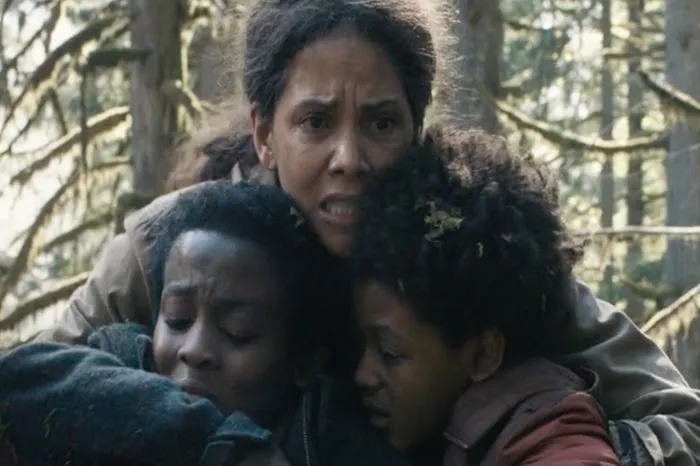In Alexandre Aja’s latest horror film, Never Let Go, the unsettling atmosphere returns to the woods just months after previous cinematic horrors reminded audiences to tread carefully. Starring Halle Berry, the film follows a mother striving to protect her twin sons in a post-apocalyptic landscape, isolated from the remnants of society. Aja introduces a set of stringent rules for survival, chief among them the necessity of keeping a rope tied to their remote cabin, a tether that symbolizes their connection to safety and home. The film warns that if they stray too far, they risk encountering a malevolent force that only the mother can perceive.
As the narrative unfolds, the tension escalates when the family’s food supplies dwindle, culminating in an alarming dinner of fried bark. This precarious situation stirs doubt in Nolan (Percy Daggs IV), the more questioning twin, who begins to grapple with the implications of his mother’s protective instincts, especially in contrast to his more compliant brother, Samuel (Anthony B Jenkins).
While watching Never Let Go, it’s nearly impossible to ignore the echoes of other films, including Bird Box, The Babadook, and A Quiet Place. This film emerges from the current trend of pandemic-era isolation thrillers and serves as an allegory for broader themes. It explores a mother’s struggle to shield her sons from external threats while potentially endangering them through overprotection, touching on issues such as inherited mental illness and the challenges of raising Black sons in a harsh, racist environment.
The film finds its strength in the ambiguity between fear and understanding, creating genuine tension as it forces its characters to confront their worst fears. Aja, known for a mixed bag of films, manages to evoke a nightmarish atmosphere, showcasing the haunting visions that plague Berry’s character, including grotesque manifestations of her deceased family.
A standout scene involving the family dog generates real suspense, but it also marks a turning point where the film begins to unravel. Following a shocking twist, the narrative descends into confusion, diluting the earlier intrigue and leaving the audience grappling with an unsatisfying conclusion.
Aja struggles to balance the film’s serious themes, underscored by gothic chapter titles and grim depictions of trauma, with its more fantastical horror elements. The film wavers between jump scares and deeper reflections, ultimately losing its way in the murky middle ground. While Halle Berry delivers a compelling performance as a desperate mother, by the film’s end, viewers may find themselves ready to let go.
Related topic:
Is Joker a Good Movie? [Revealed]
How Many Sicario Movies Are There?
What Is The New King Kong Movie Rated?

